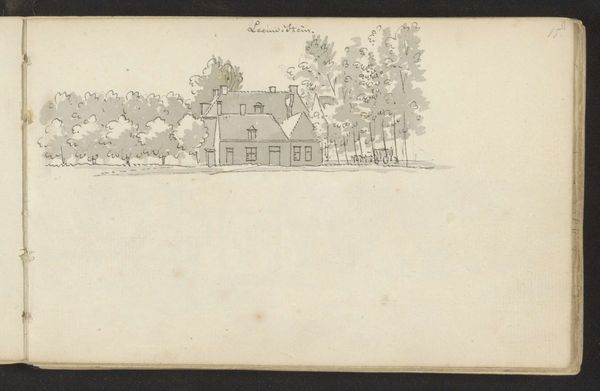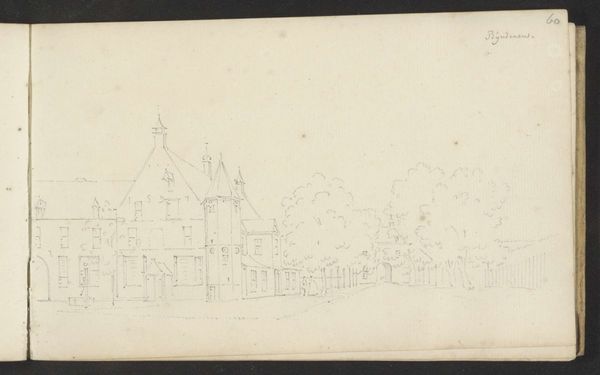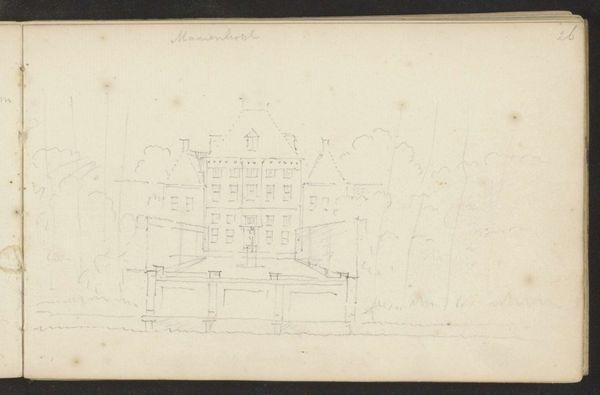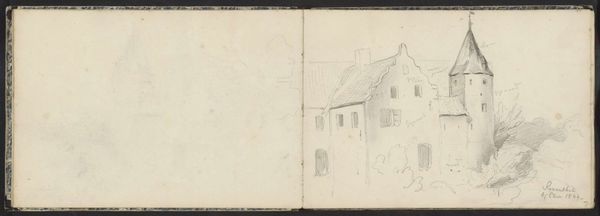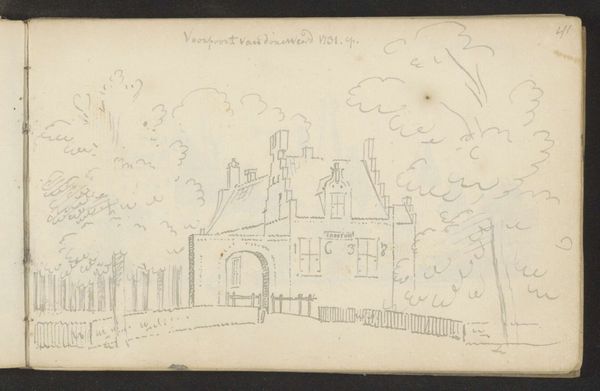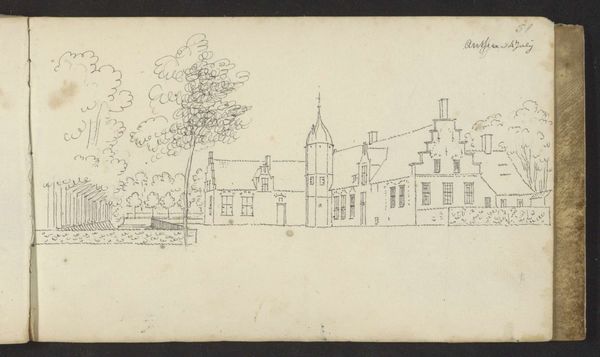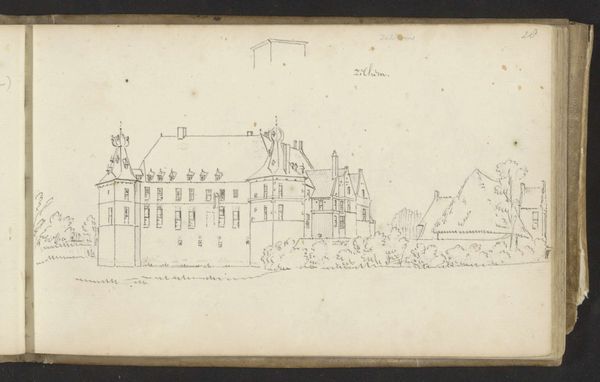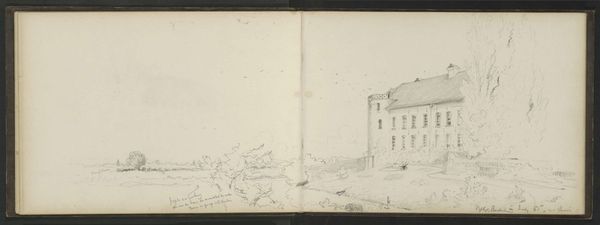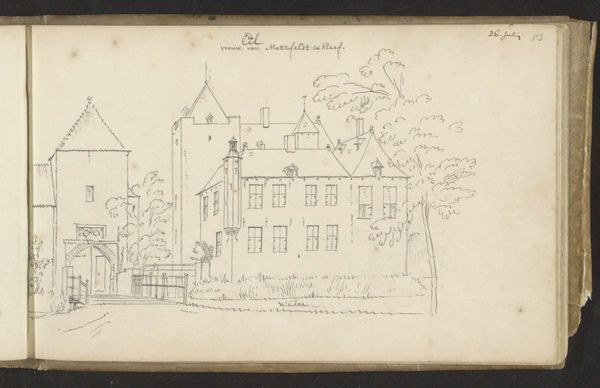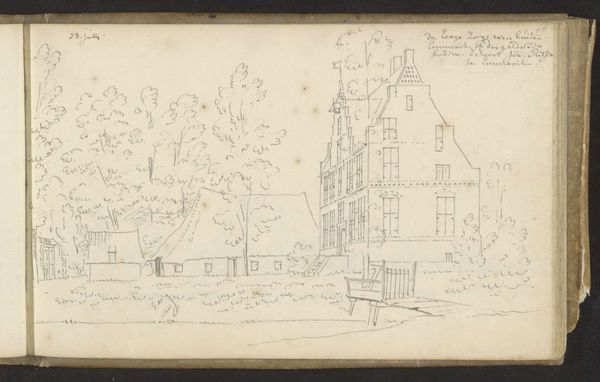
drawing, paper, ink, pencil
#
drawing
#
landscape
#
paper
#
ink
#
classicism
#
pencil
#
history-painting
#
academic-art
Copyright: Rijks Museum: Open Domain
Here's a glimpse of the Huis te Zwanenburg near Haarlem, captured in delicate strokes of graphite on paper by Abraham de Haen II. The thinness of the lines speaks to the artist's process; less a finished artwork than a fleeting impression, recorded on the spot. The character of the graphite itself is crucial, allowing de Haen to create subtle gradations of tone. Look closely, and you’ll see how the varying pressure of the pencil brings the architecture to life. Drawings like this served a vital purpose. In the 18th century, before photography, they were a key way of documenting the world, of capturing landscape and architecture. But they also reflect the social status of the artist. De Haen, trained in a family of artists, would have moved in circles where the ability to draw was a valued skill – a form of cultural capital. This seemingly simple sketch, therefore, is not just an image, but an artifact of its time, embedded in social and economic structures. It invites us to consider the labor, the social context, and the artistic conventions that shaped its making.
Comments
No comments
Be the first to comment and join the conversation on the ultimate creative platform.


